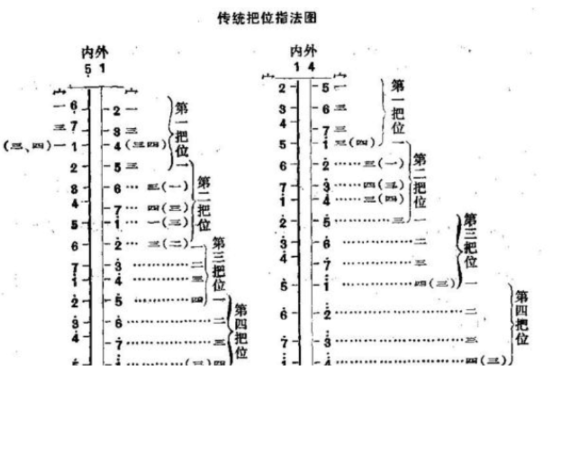Beginner's Beginner's Handle
The falling hu has some playing characteristics of the erhu, but the tuning is completely different. It is a fourth tuning, mainly 14, 25, 51 three. One of the most used is the 51 string, pay attention to 5 is the bass.
The difference in the tuning of bowed stringed instruments such as zhehu and erhu is that the standard pitch is not fixed. For example, the erhu tuning is generally d1-a1, and the violin is GDAE, but the hu, especially the violin used for the accompaniment of Lu opera, depends on the tuning, that is, according to the voice of the actor and the requirements of the composer. Like the 51-string tuning, the outer string tone can be selected in the range of D--G, the highest is G, the lowest is D, and it is difficult to make the Zhuanhu produce the best volume and timbre if it goes down and up, which will affect the accompaniment of Lu Opera singing. range and style.
Further, if the tuning is too low, the strings will sound dull; if the tuning is too high, the strings will be shrill and harsh. Only when it is set in the appropriate range, can the characteristics of Zuihu be fully embodied and brought into play.
As for the sound range of Zhe Hu, it is generally close to three octaves, but individual trebles are too sharp and generally not used. The commonly used sound range is two octaves at most. For example, with a 51-tuned Zhe Hu, its effective range is (for Lu opera music):

As mentioned above, the pendant is tuned to the fourth degree, so its position is a bit special. In addition to the fixed position, there are also temporary positions and mobile positions.
The fixed handle position is basically equivalent to the erhu. Both start with the index finger, and make a relatively fixed change position every fourth or fifth degree on the string. It is worth noting that in the first and second fixed positions, the second finger (middle finger) generally does not press the strings, because the pitch of the pendant is wider, of course, this has to be in the absence of chromatic scales.
Temporary handle position means that the index finger is used as the basis for changing the handle, and the finger is temporarily moved to the index finger in the fixed handle position. Twice above or below, this method of disrupting the normal fixed handle position is completely temporary according to the specific situation of the melody. Fingering used.
When moving the handle position, the fingers are based on the fixed handle position, move up or down, beat the strings, and finally return to the fixed handle position.
This is actually a changer for stringed instruments. Finally, the fingering diagrams of the transmission handle of three different tunings are attached for your reference and practice.

 渝公网安备 50010702504639号
渝公网安备 50010702504639号